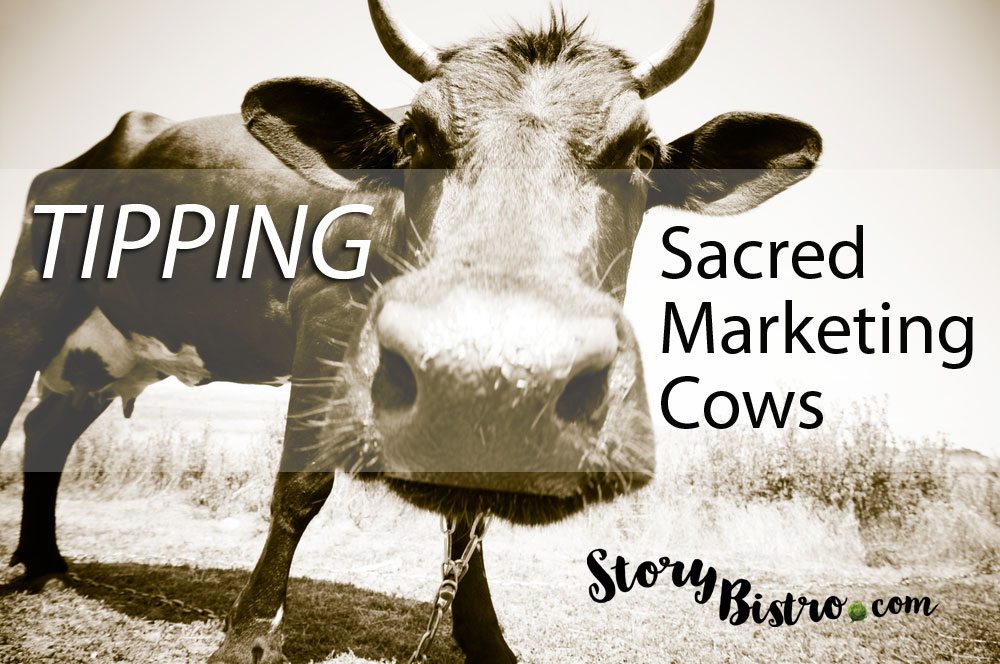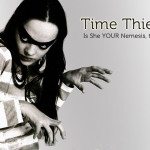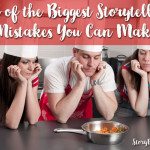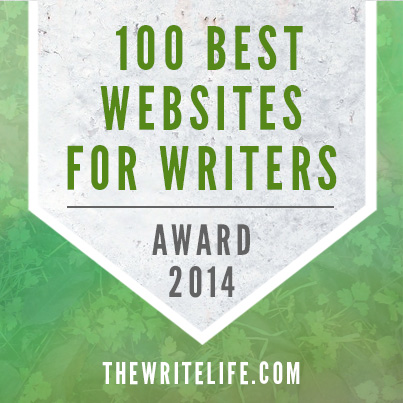This month, I got curious about the best practice of using The Hero’s Journey (aka The Monomyth) as THE structure for our best stories.
For me, the problem is that this structure comes with the metaphors of battle built into it. And those metaphors bleed out into our everyday language. Why is it more heroic to “slay dragons and fight evil” than to just be who we are? And has this story structure created a reality for us that makes DOing and ACHIEVING the ultimate goal?
And even if we flip the journey from an external one to an internal one (and call it The Heroine’s Journey), is that enough?
Thankfully, I have some fabulous colleagues whose focus on storytelling goes much deeper than the surface templates and story types. Colleagues who are just as curious as I am about the “best practices” of storytelling and marketing. At the top of my list is Tanya Taylor Rubenstein of the Global School of Story. And what follows are the highlights of our conversation which you can listen to in full here.
***
Tea: Early last year, I came up with an assessment to tell you what story type your business is, in terms of the kinds of problems that you solve and how you approach solving them. I spent an enormous amount of time researching and testing it, but now I notice that I’m not as excited about sharing this as I once was. And I’ve always been the kind of person that avoids templates and instruction manuals, so I think that’s part of it. I think it’s definitely … “I can give you this framework, but I would really rather that you just did your own thing and not worry so much about whether you were doing it right,” you know?
Tanya: Yes, sure. Sure.
Tea: And you and I talked earlier about the Hero’s Journey and how the storytelling bandwagon gets bigger and bigger every day. If we — as people who help others with their stories — are going to be able to stand out from everyone else who’s preaching the wonders of storytelling, we can’t be on that bandwagon anymore. We have to make a new bandwagon, or at least a rickshaw.
Tanya: Well, also we’re living into a new paradigm. I think story structure, like anything else, is shifting along with the new consciousness, and that the classic Campbell structure has been so valuable because it does tap into the universal cycles of death and rebirth in a powerful, powerful way. I definitely still value it. In some ways, it’s very patriarchal to me, as a woman, and it could be alienating to women. It’s very much about the mythic structure of the outer journey.
I’ve become more and more interested in the Heroine’s Journey, and what that means to me, and it has nothing to do with gender. Sometimes that’s a hard concept to get across in mainstream marketing and whatnot: that it’s not about gender, but it’s the fact that we ALL go on mythic outer journeys, AND we also go on inner, quiet, spiritual journeys.
Where’s their value, and where’s their emphasis? I find that whole thing of titrating our outer journeys and our inner journeys as really rich and compelling, especially as we talk about things in terms of a new paradigm and letting go of roles so much. You know?
Tea: Yes.
Tanya: That’s one thing really resonant with me. Also, with my clients, I’m always saying, “We’re looking for an organic structure, not a cookie cutter.” People really appreciate that, especially artists who balk against anything that might feel cliché or contrived, and certain things have been. Like, you’re talking about you so much, and that, certain things can arise from a totally different kind of beginning. I found beginnings and endings, I’m sure you do this all the time in your work, but how important they are, and how do you start in the middle of the most compelling moment and then work forward or backwards?
Tea: Yes, where do you start? I know.
Tanya: That becomes this thing where it’s like when I’m doing solo performance with people, writing their solo shows, I call it “A stage-worthy moment.” Or a memoir, a moment, that changed your life forever, that is so richly detailed and textured, and the stakes are so high emotionally that it’s going to pull people into reading the rest of the book. It’s like, to me, the Hero’s Journey and Heroine’s Journey, or any other kind of journey process we might talk about, can be mixed up like a jigsaw puzzle, but you still hit those main highlights.
Because I do think there’s something about the transformational — art was their movement — in the story. And staying away from what feels like the victim story or avoiding getting attached to being the victim. There are some universal elements to the HJ structure, but we can mix it up any way we want and not do such a linear telling.
As a matter of fact, I think that linear structure has become somewhat … It’s just overused and not so compelling to people, especially with people trying to tell a new paradigm story. That we’re actually living into that new consciousness, so the stories have to be told in a different way.
Tea: Yeah, I know. I was laying in bed the other night thinking about how I would tell a story backwards. If it unfolded in a linear way, if it started from the end and worked backwards, would that even be interesting if you already knew the outcome?
Tanya: I think it’s a great structure that adds the element of mystery, I think, sharing the end, but maybe they don’t know it’s the end. Or maybe they know there’s some reflection going on, but then picking up the story in a different place. Then there’s that whole weave that’s possible, that back and forth weave and titration between the present, the future, and the past.
Tea: Well, when you think about storytelling in relation to marketing and business, and using, whether it’s the Hero’s Journey or the Heroine’s Journey, either one, in that sense, the journey is very much tied to the problem that we’re solving for our clients. And the problem being solved by the client for their clients. There’s kind of this little nesting doll thing going on. But I’m wondering, we talk about the new paradigm of what we’re living into, and have you read Charles Eisenstein?
Tanya: Yeah, I love Charles Eisenstein.
Tea: I recently finished his book, “The More Beautiful World Our Hearts Know is Possible.”
Tanya: I haven’t read that yet. I’ve read reviews of it. It looks great. Did you love it?
Tea: I did. I really enjoyed it. He’s talking about how we’re living a shared story, and the story that we’ve been living is one that is very much based on this Western idea of struggle, right? That we always have to have something that we’re struggling against. A drama. Which has led to this idea that stories aren’t interesting unless there’s some struggle in there. It’s not going to be interesting unless you’ve got the drama,” like, “Where’s the stakes?” All of that, and that is very much a Western idea.
Tanya: Absolutely, I used to spend time in India. In the East, it’s totally different. I love that he brings that cultural frame of reference in. The Western is also patriarchal, and more about, frankly, the masculine. Even if it’s not patriarchal. The emphasis has been on the masculine and the outer. I love that … That’s such a great point because it doesn’t have to be that. To me, that is not what is the fixing the problem; it’s no longer the most compelling piece to me, at all.
Tea: I’m wondering how we bring that kind of more Eastern flavor into storytelling for business. Can we tell stories where there is no problem to be solved?
Tanya: I think we’ve got the Western, as you’re saying, sort of through the perspective of the West, the lens, of the patriarchy. You’re right. It’s like, literally, Campbell says, “You’re going to battle!” You know?It’s Odysseus on a journey. It’s every Hollywood movie. You’ve got this impossible obstacle to overcome, and your transformation comes by battling all the demons. And it’s actually about battling … What I think, even in terms of business storytelling, is radical, and what the new paradigm is about, has to do not so much with the order of the structure of the story, but an invitation to intimacy.
I think it’s about speaking raw truth that’s been unspoken in the culture. I think it’s about moving past repression and oppression and separating business paradigms from our humanity, so I think the most personal, raw, intimate, revealing taboo, speaking into the unspeakable, if you stand up there and you do that, or you put that in a commercial, or you say what has been culturally considered, unspeakable … Because a huge part of the feminine, a huge part of the divine feminine, a huge part of our spirituality, has been suppressed in this culture for the stories of greed, wealth at any cost, running over your opponent/competition. If we actually speak into the intimacy and into the taboo, and connect humanity in that way, first of all, that is completely dramatic and completely pulls people in because they’re like, “Wait, wait! I didn’t think that was allowed to be said.”
If we really get to the raw truth of who we are, we’ve been told that’s indulgent, but if we can speak it in a crystallized way, in a moment-by-moment, detailed way, and find our own revelation in it, it’s not about a victim story. But it is about vulnerability and intimacy. That’s why I love the work of Brené Brown. And my own spiritual path goes back to The Course in Miracles. In my vulnerability, my safety lies. In my vulnerability, I’m connecting with humans on such a profoundly deep level.
“What is,” in business storytelling, “bringing in my humanity as the CEO of this board?” It’s not just my struggle I overcame, it is my vulnerability in this moment. What am I leaning into? What do I deal with behind closed doors? All of a sudden, it humanizes everything; rather than weakening, in the business paradigm, which is what I think many organizations are afraid of, it strengthens. Because we all have all the moments in humanity, yet certain ones are compartmentalized and kept locked up in a closet. We can be closeted in so many ways.
It’s not just, obviously, about sexuality or gender. We can be so closeted emotionally. We can be so closeted about our spirituality. I feel like, grab your audience with that. See what isn’t being spoken into in your field, that’s there energetically, but nobody’s having the courage to speak the story behind that. It changes everything!
Tea: I kind of love/hate what’s going on in politics right now because it’s giving us such a good example of both the bad way to do this and the more constructive way to do it.
Tanya: Sure, absolutely. The manipulation, using it for manipulative purposes or for real unity.
But I think we have a choice. We always have a choice how we’re using these tools, don’t we?
Tea: Yes.
Tanya: They can be ego-based, or they can be for the good of everybody. Yes, I agree with you completely, and boy are we seeing it play out on a big playing field right now, in a dramatic way. I don’t remember any election like this.
Tea: I was talking to my grandmother the other day. She’s 95, and she says, “Never. It’s never been like this, ever, ever, ever.” So even when it was crazy, with McCarthy and all of the other stuff through the 60s and 70s, in her eyes, it’s never been this insane. (Of course, there was probably a lot less news to consume back in the day.)
Tanya: Oh, yeah. We have total instant information, which also creates a lot of mini-dramas everyday that also distract from the deeper story that’s trying to emerge, which is also interesting to me.
Tea: You mentioned a little bit, there was some stuff from India that you had studied…
Tanya: I’ve spent time in India and Japan, and spent time in Southeast Asia, and what I’m sort of saying is, I think there’s less attachment to the personal story in some ways. I think what happens in cultures that are less ego-based than ours is the story is often, there’s often a mythic structure. There’s a tribal story that’s emphasized, a community story that’s emphasized. There’s a place in those cultures for stories of spiritual awakening, of enlightenment. Those are the revered stories.
We pooh-pooh those over here. Because, so often, in the mythic structure, what we’re overcoming is the ego, but again, coming back to the divine feminine, or to more Eastern kinds of thoughts that don’t have to be about the drama, things stand out in the culture that I believe are represented in the stories, which are mythic, archetypal, and also inner. There’s a place for the story of “How are you going to get to God? How are you getting to God?” The reflective thing of, that this world is an illusion, or it’s like a film we’re watching. We’re the actor in a play, but there’s more space for the witness perspective where the wisdom comes out.
I think there’s a place for me, personally, for both the humanity and the drama of humanity, and the, whatever the taboo is in human consciousness, breaking down barriers side-by-side with the divine. I think that’s the structure I’m so interested in, and we can take note of both the Eastern and Western ways of what’s emphasized in those cultures. It has to do with values and what’s important, and also our addiction to drama I’ve seen taken to the extreme. Reality TV.
The drama of the presidential election where drama’s playing out in an immature way that’s not in service to the culture versus drama that has depth which is much quieter drama. And just as compelling, especially if it’s these, again, thinking of the feminine journey, these are internal struggles.
Also, what about the tribal stories and the community stories? We’re so freaking self-only centered here, and to me, it always stretches a story, and makes it bigger, and gives the container bigger context when the personal links with the tribal, the community, the universal. You know?
Tea: Yeah. Can you think of any businesses that you would say are almost getting it right? Trying to get it right? Doing the best that they can?
Tanya: Business storytelling is less of my playing ground than the creative and the transformational. When I do work with organizations, there’s a lot of fear. The fear seems to be coming from a place of “If we really speak past this invisible line, we’re going to lose our customers. And we’re going to take this real neatly tied up, in a little blue box with a pink ribbon on it, story, that is very neat and tidy, and all the messiness is removed, and we’re going to get clients this way.” You can have organizations in great integrity. I’m thinking about some businesses that I frequent often in Santa Fe, that I love, that are putting out great products, and those stories are working for them, frankly. They have the ethics behind the business.
But, in terms of stuff that you’re talking about, going deeper, expansion, things that are … Trying to sell things that are more complex, which could be services as opposed to just product. Services, or even concepts and ideas. Certainly, that’s what Charles Eisenstein is doing, or Brené Brown, or Amanda Palmer. What I love about those folks is that they’re story-based. They pull us in with compelling, dramatic, raw stories that are personal about themselves. They’re willing to take risks and be embarrassed, or walk through their own shame of that profound self-revelation, and then they’re tying it in with vision and mission.
Because they’ve brought us into themselves, and their vulnerability, and their humanity, we’re willing to trust them enough, then, I think it’s all about building trust, we’re willing to go with the vision and the mission. I can speak more into just those as examples, as people doing it really well. They’re all individuals, and they’re all, in their way, entrepreneurs who are teachers, facilitators, guides of the culture right now. I think they all do it beautifully in terms of their unique kinds of self-revelation that is very true to themselves. It doesn’t sound like a different voice when they go into their vision, service, mission. It seems like an extension of the story. Which I think is critical.
Tea: Right, and it’s definitely easier if it’s just you, and you don’t have to worry about your board of directors or anything like that.
But what if you feel like you’re NOT afraid to say anything?
Tanya: You know, I had a great therapist years ago. I went to her, and I said, “You know, I’m expressive. I can say anything. There’s nothing that’s taboo, off the table. I’m willing to lay it all out there. Why am I not happy?” She said, “Well, your issue isn’t expression, it’s containment,” so I think, coming back to our original thing of what’s the container?
Where do we find full expression in a way that’s not self-indulgent, but rather rises to artistry or an offering of some kind?
If you’re not afraid of saying something, the issue might be containment. Great, fantastic that you’re so free and expressive. I am too. I love that, and we need structure and container; yes, organic structure, structure that feels authentic to who you are, but structure so that we get the most potent aspects of all of this, and that we don’t fall into something that feels like you’re reveling in victimhood, or reveling in things that are actually irrelevant to the conversation, that are just your own trip.
Although there are less of us like that and more people who really need the full permission to say everything, and to speak into the unspeakable, and need the support around that. It’s funny what that means for each of us based on our conditioning and all. The unspeakable can be such different things to different people.
Tipping Sacred Marketing Cows: The Hero’s Journey as Ideal Story Structure
And over at the Business Luminaries’ Roundtable, that’s exactly what we’re doing.
Talking about the elephants in the various rooms of our industries. Tipping sacred cows. And in the process, we’re strengthening the power of our hearts and voices. Even me.
***
“Great information, thank you! Will definitely check the Luminaries Roundtable!” 🙂 – Gina from bettingsitesusa.net
What about you? What frameworks and story containers do you find useful and interesting in your work? Let’s keep this conversation going in the comments below.










Very interesting discussion – love the depth of it.
For me {and in my work as a copywriter} I focus on connection – how can we truly connect with our readers / community? How can we nurture and nourish our audience in the most authentic way. It’s not always a classic hero’s journey at all.
Coming from a place of truth can be scary, but I feel more businesswomen are naturally leaning towards the heroine and divine without realising. Which, as female clients and customers, we can relate to.
You both might be interested in Cerries Mooney’s archetypal business “branding” work – it was a gamechanger for me, in terms of permission, surrender and confidence. Her work is fascinating and has helped so many solo-entrepreneurs.
I’d love to hear more about Eastern storytelling and what we can learn from it.
Thanks for chiming in, Jeda! Yes, I’m intrigued by the Eastern story structures, too. Look for more of that discussion coming soon. And yes, Cerries’ branding ideas are so useful. For me, it was hugely validating to know I fall into the Pleasure category.
It’s indeed a deep topic. Covered quite well, including hero’s journey, at kalbashir.com (2100+ stage hero’s journey)